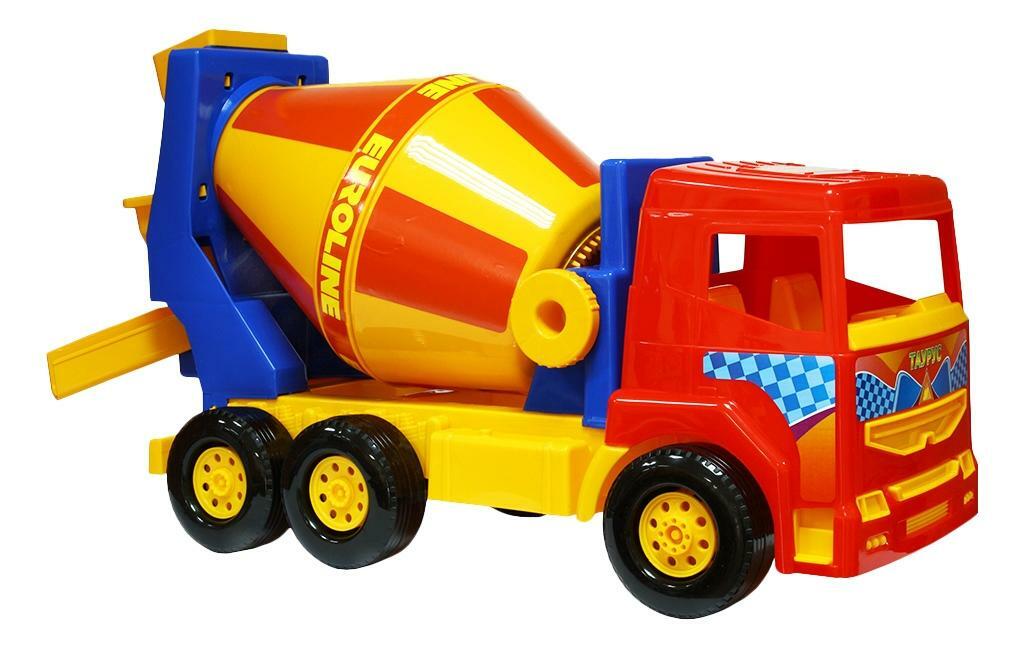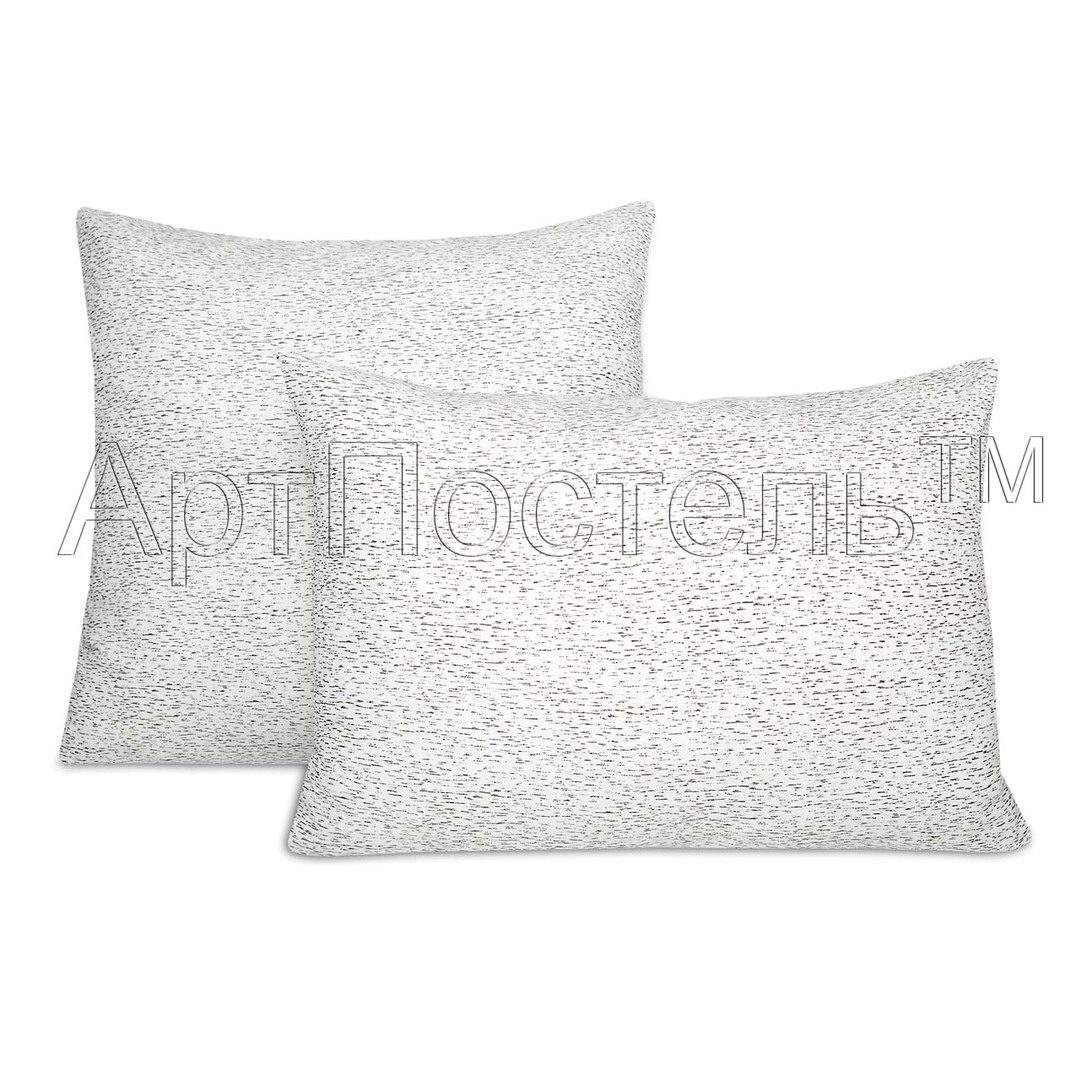An electric boiler (EK) is a source of heating, as well as hot water supply and has an ultra-high efficiency of up to 99%, in contrast to boilers operating on natural fuel. Such heating units are indispensable in areas where natural gas and coal are absent. They do not pollute the atmosphere with emissions of harmful flue gases, operate practically silently and have a regulation range of 10 to 110%.
The rating of electric boilers determines the most successful modifications, which in practice provide a high level of automation and safety. Such boilers are well integrated into the “Smart Home” system and do not pollute the environment.
Types of electric boilers
In the trade network of climatic equipment today you can find several dozen different modifications. electric boilers, which differ in the principle of operation, the scheme of movement of the coolant and the working tension. Nevertheless, all these boiler models are united by a common approach to heat generation, which is produced by converting electricity into heat and releasing the highest efficiency, reaching 95 - 100%. Decent models are characterized by a high level of automatic protection and regulation in the range from 10 to 110%.
In order for the user to better navigate among the numerous EC brands, they are all grouped according to several criteria:
- by type of heating elements: electrode, heating elements and induction;
- the number of heating circuits inside the boiler body: single-circuit and double-circuit;
- working voltage: for single and three-phase 220 V / 380 V.
Electrode boilers
The rating of electric boilers of this modification is quite high, they always occupy the first positions, despite the high cost. The principle of their operation is based on the use of heat released during the chaotic movement of ions; therefore, these ECs are also called ionic and ion-exchange ones.
In order for the ion-exchange process to take place inside the housing, two oppositely polarized electrodes are installed in the equipment, which change their electro-polarity "cathode-anode" with a current frequency of 50 times / sec.
The change in polarity causes the movement of ions from one electrode to another, while the process proceeds with heat release, which is transferred to the heated water through the walls of a closed internal heat exchanger heating circuit.
At the same time, the heating coolant is in a separate “compartment” without mixing with the heated medium. This requirement is caused by the need to create a salt balance of the heating circuit water in order for the ionization process to increase.
The special advantages of this type of boilers are high performance, ultra-low heat losses, the ability to work on low-quality parameters of electricity (up to 180 V), no scale on the heating heating surfaces and low dimensions. Such an electric boiler for heating a private house in the rating of climatic equipment occupies a consistently high position.
The disadvantages of such modifications, experts attribute the relatively high cost compared to conventional Heating elements, the need to change the electrodes, which decrease during heating due to the transition ions. Also, such equipment requires the installation of a serious grounding system, since current leakage through the chassis is possible.
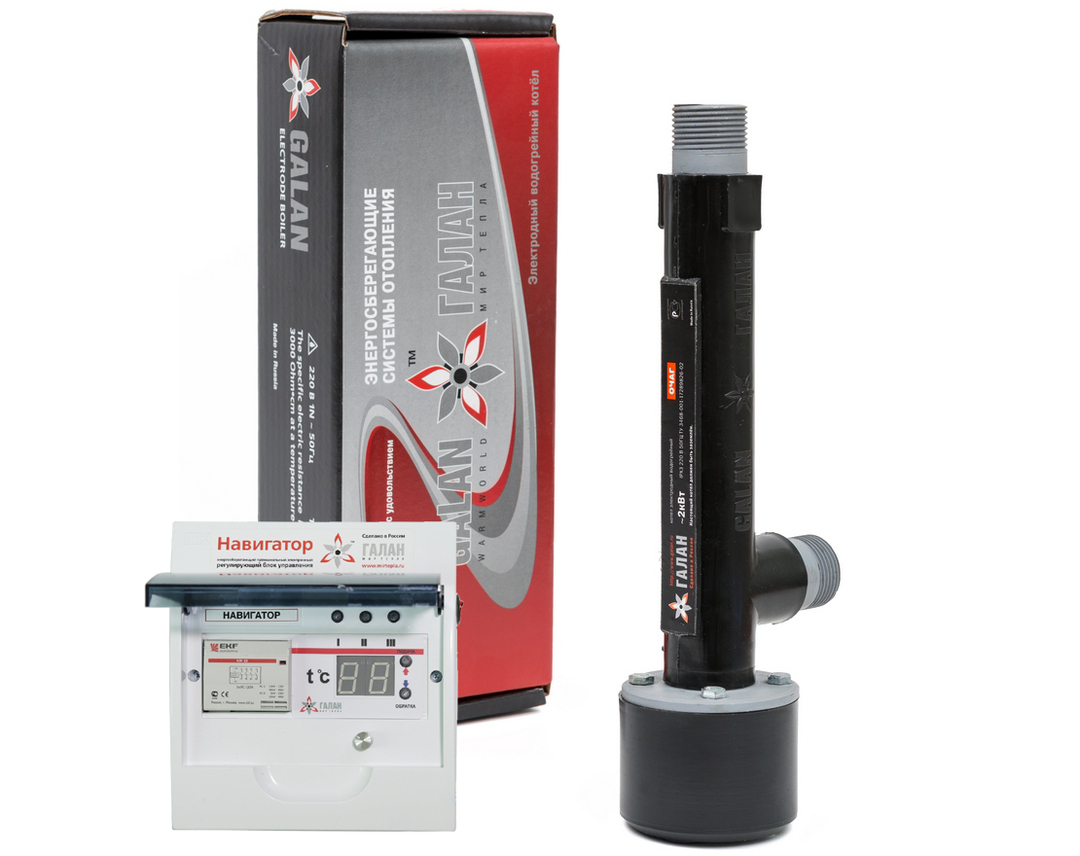
Heating elements boilers
This is the most budgetary and proven option for electric boilers. Such equipment has been used for a long time at residential and industrial facilities, therefore its design is optimized and simplified.
The principle of operation of such devices looks like this: the EC consists of a case in which several heating elements with high resistance are installed. When voltage is applied to the heating elements, thermal energy begins to be released, which is transferred to the circulating heated medium of the heating circuit.
A distinctive advantage of the design of such EKs is their high maintainability: in the retail network, you can choose any necessary heating element and replace it yourself. In addition, the installation of several heating elements allows cascade regulation of the heating process. Boilers of this type can work with natural and forced circulation.
The disadvantages of these ECs include, first of all, a relatively high loss of heat and energy, therefore, their maximum efficiency does not exceed 95%. It is in this regard that the rating of an electric boiler based on heating elements is low.
Important! The high process of scale formation on heating elements can disable them in the first year of operation. And this is with a standard service life of 5-6 years. Therefore, for these types of boilers, internal circuit water is required, equal in composition to distilled water. Sometimes special anti-freeze compounds are poured into the boiler, which help to reduce the risk of breakage.
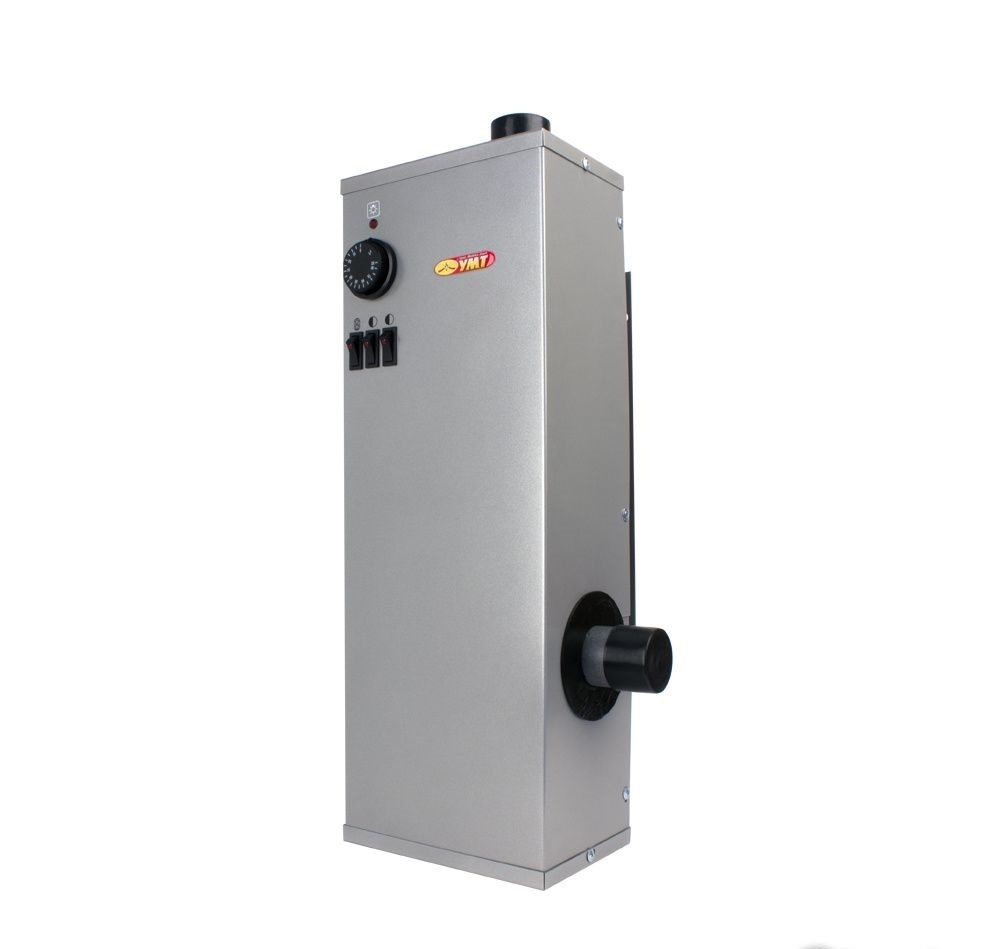
Induction boilers
These boilers are innovative climate technology with a perfect heat transfer process with an installation efficiency of almost 100%.
An induction boiler consists of a body and an inductor coil through which an electric current is passed. At the same time, heat will be generated contactlessly on the conductor in the field of the coil, which occurs due to the work of the principle of magnetic induction. Heat, in turn, is taken away by the circulating water from the heating circuit. So, in fact, the heating process takes place.
Such boiler designs have their own distinctive advantages: they do not have increased quality requirements. water in the internal circuit, since scale formation processes do not occur in the boiler due to contactless heating. In addition, it is the "quietest" type of boiler, which is also important.
The disadvantages include high cost and large dimensions. Such an electric boiler has an average rating due to the high price.
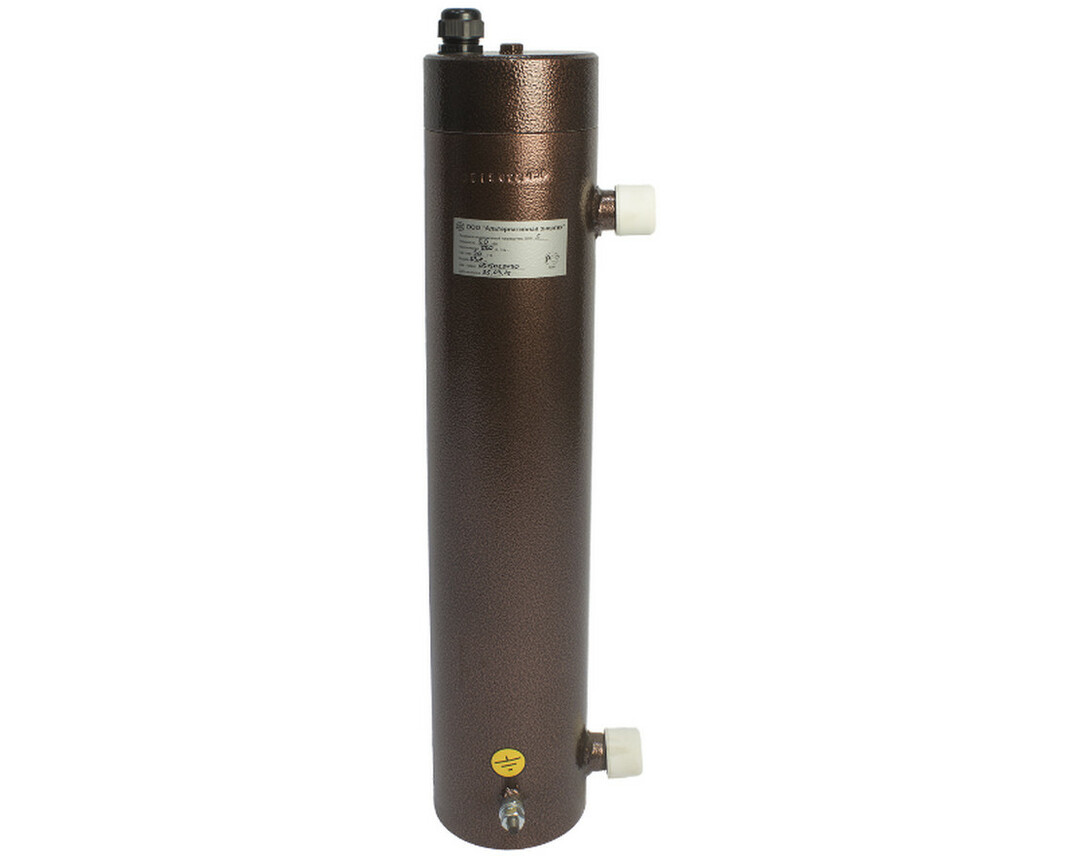
Single-circuit and double-circuit electric boilers
In practice, electric boilers can function according to two principles. In the first case, the equipment operates according to the simplest single-circuit scheme, during which only the coolant circulates through the boiler, which heats the object.
In the second case, the device acts as a source of heat supply, operating according to a two-circuit heating scheme. At the same time, the boiler design has two independent circuits: in one, the water is heated for subsequent heating, and in the other - for the needs of hot water supply.
The second option is usually equipped with an external storage tank. In this case, it is possible to unload the operation of the boiler by switching to the main heating at night (with differentiated tariff metering of electricity with a minimum tariff). Storage tanks can contain a daily volume of hot water for the whole family, or they can have much more.
Important! The design of external tanks allows keeping water hot for several days without temperature loss.
In addition, the considered connection diagram of a double-circuit electric boiler integrates well for working with "green" energy carriers, which are: the sun, wind and heat pumps, which increases the rating of electric boilers due to their versatility functioning.
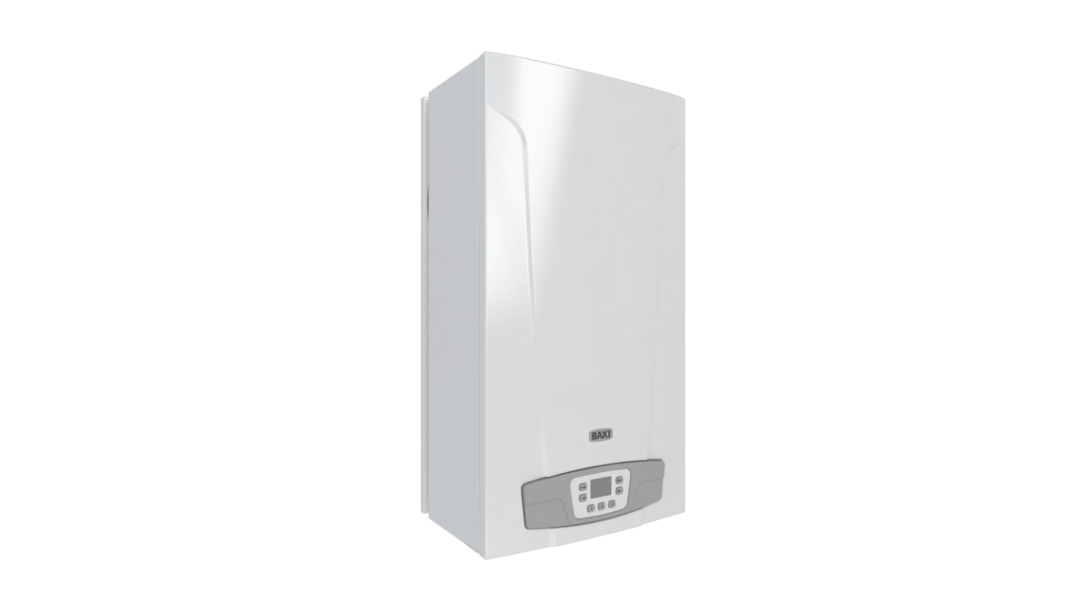
Three-phase electric boilers
All existing electric boilers operate on two types of voltage, depending on the operating heating power. Boilers with a capacity of up to 10 kV are considered domestic and operate on a 220 V network. At the same time, the input power into the house must provide the total load on both the EC and household consumption.
With an EC power of over 10 kW, a three-phase power supply is required at the entrance to the boiler with a voltage of 380 V. In addition, for the operation of such equipment, a permit from Energonadzor is required (for the right to install electric boilers), which is rather difficult to obtain. It will require a convincing argument from the user explaining why he cannot use other types of heating.
Approximate calculation of the electrical power of the boiler
A complete calculation of the power of an electric boiler can only be performed by specialists using a complex thermal engineering software complex, since it depends on climatic characteristics, the construction volume of the building, the type of roof and basement floor, the glazing area and the thermal resistance of the walls, as well as many other factors that are practically taken into account when calculating manually impossible.
Therefore, to designate approximate indicators, an enlarged calculation is performed, the results of which are quite acceptable to use when choosing boiler equipment. To determine the power of an electric boiler located in the central regions of Russia, a simple formula is used: Mek = 0.1x P from,
Where:
- Mec - power of EC, kW;
- P from - heating area in m2.
For example, for a two-story house with an area of 210 m2, the minimum electrical power is calculated as follows: 0.1 x 210 = 21 kW.
Additionally, a DHW system will require 25-30%, or about 6 kW.
In addition, a power margin of at least 15% is additionally taken into account, so the final result will be at least 31 kW.
Important! For the northern regions of the country, this indicator should be increased by 30%, and for the southern regions - reduced by 20%.
It should also be borne in mind that the calculated boiler output is the maximum for the lowest outdoor air temperatures. There will be no more than 20-30 such days in the heating season, and the rest of the time the boiler will operate with underload in terms of power.
Therefore, when choosing a boiler, it is better to take not one, but two or three devices so that they provide the total power of the heating load. This will allow the equipment to work more stable and longer. In addition, the user will always have a reliable reserve for the source of heat supply in the event that at a subzero temperature outside one of the units breaks down.
Which boiler is better: electric or gas
If gas is centrally supplied to the house, then, of course, a gas boiler will be better than an electric one. First of all, this is explained by the price of equipment and the cost of heat energy. Keep in mind that at the moment the prices for electric boilers and electricity costs are twice or more higher than gas heating.
But provided that the gas main is not connected to the site and the likelihood of its connection in the nearest time is approaching zero, then the installation of an autonomous electric boiler room is quite justified and quickly implemented project.
How to choose an electric boiler and what to look for at the same time
After it was decided to install an electric boiler as a source of heat supply, first determine operating voltage and power, depending on the climatic characteristics of the area of residence and the required heating load and DHW. The first, in turn, is determined by the heating area, and the second is selected according to water use rates, depending on the number of family members and the level of hot water supply.
After choosing the power of the heat supply source, they are determined with its scheme, which can be natural or forced. The first option can only work in houses of a small area and not exceeding 2 floors. In order for the circulation in the heating circuit to have a sufficient speed and cover all dead-end sections of the heating network, an expansion tank is placed in the system, selected according to the volume of the heating network.
Forced circulation of the coolant is carried out by a centrifugal pump, which can work with all types and sizes of heating objects. The main thing is to choose the right performance of the electric pump so that it matches the power of the EC.
When choosing a boiler, pay attention to the control and protection system. As a rule, the EK automatics are completed together with the heating unit at the factory. The user should pay attention to its configuration and control capabilities, as well as clarify whether it has remote operation functions. The type of coolant temperature control system is also important. It can be weather dependent or based on the indoor air temperature in the room. Also, do not forget about receiving information regarding the availability of the ability to control a three-way valve. This is required in order to switch the heating medium to different heating and DHW circuits.
Expansion tank
This protective device must correspond to the heat output of the unit and the volume of the heating medium in the system. With a power of 30 kW, the minimum volume of the coolant is selected from the ratio 1 kW = 15 liters: 15x30 = 450 liters.
The expansion tank charging pressure is assumed to be 1.0 bar with a maximum allowable pressure of 3.0 bar. Considering that the coefficient of expansion of water at t = 85 ° C is 0.034, the volume of the tank should be 90 liters, with a minimum filling of 50% - 45 liters.
Expansion tanks of this volume are manufactured by BAXI, Valtec, JILEX, STOUT, Wester and UNIPUMP. The price range varies from 6,000 to 12,000 rubles. depending on the design of the diaphragm and the operating pressure in the network.
Pump
An electric circulating pump with a "wet rotor" is installed in the heating system for forced circulation of internal water circulation. The main indicators when choosing electric pumps are as follows: boiler power, temperature difference at the inlet and outlet, as well as pressure drop, which ensures the pumping of the coolant through all local resistances in the internal heating networks.
Calculation example:
Gн = Qeq * 0.86 / (t2 - t1), m3 / h, where:
- Mon - water consumption through the pump, m3 / h;
- Qeq - thermal power, 30 kW;
- t2 is the temperature in the supply pipeline, 80 ° С;
- t1 - temperature in the return pipeline, 40 ° С.
Gн = 30 * 0.86 / (80 - 40) = 0.645 m3 / h
Pumps for the heating system in this range are produced by manufacturers: Grundfos, Leberg, OASIS, ONDO, Valtec, Vester, Wilo, ZOTA, Belamos, Vikhr and Dzhileks. The cheapest kits cost from 2000 rubles.
Ability to work with a multi-tariff meter
All electric boilers can work with multi-tariff or multi-zone electricity meters. In their cost, electricity is charged in three modes:
- peak 7-10 and 17-21 hours, 6.79 rubles / kW;
- half-peak 10 - 17, 21 - 23 hours, 5.66 rubles / kW;
- at least from 23-7 hours, 2.33 rubles / kW.
The expediency of switching to a multi-zone meter arises for consumers when electricity consumption exceeds 1000 kW * h per month.
The average monthly consumption of EC for an apartment of 100 m2 is over 6000 kWh. Therefore, the real savings in the use of multi-zone accounting for EC is obvious.
In order for the user to be able to maximize the use of EC during the hours of the night minimum, additional equipment power will be required. and the presence of a volumetric storage tank, in which the coolant can heat up at night, and circulate through the heating system.
Important! Installation of a multi-zone meter for electric boilers must be coordinated with Energonadzor.
Three-way valve control
Efficient heat supply systems from an electric boiler provide for the presence of a three-way valve in the circuit. It can be included in the kit, or it can be purchased separately according to the characteristics of the in-house network.
The task of this device is to perform high-quality control of the temperature entering the radiators. At the same time, the boiler operates with a stable load and with the same water temperature at the outlet from it.
Another important process is regulation by mixing cold return water with hot water from the boiler. It is produced due to the work of three nozzles and a mixing chamber, which the valve possesses. The most promising in terms of the efficiency of this process are devices with an electric drive. They can be integrated into the general automation of EC regulation.
Weather-dependent regulation
This is an innovative EC automatic control system. It is installed so far only on Western modifications of electric boilers and is very expensive: sometimes its cost exceeds 50% of the price of a boiler. Nevertheless, the savings from its implementation allows the user to return the money spent in 2-3 years, which is considered a very high efficiency of investment in the heating system.
It differs from the traditional regulation by the operation of the boiler, which operates according to the internal air temperature. Management of work in a weather-dependent system is carried out according to the outside air temperature, which is an order of magnitude more accurate. In addition, such a control algorithm does not have a lag effect and eliminates the inertia of the heating networks. As a result, the unit operates with minimal power consumption, and the cost of the generated unit of thermal energy is reduced by 30 - 40%.
Connectable to load shedding relays
This is a very important boiler protection function, although the device is not supplied in the kit. The choice of a protective relay is not carried out depending on the equipment, but in accordance with the total load of electricity consumption in the house. Such a relay is capable of controlling the power of the EC, depending on the occupancy of the electrical network of the house. In the event of an overload, for example, when the washing machine, iron and kettle are turned on at the same time, the EC power is automatically reduced.
The setting is carried out at the maximum current strength, upon reaching which the relay contact instantly opens. There are other devices that can control the EC load, for example, priority switches. In the event that the total power of the connected devices exceeds the maximum allowed, the relay will turn off the lower priority category and enable the highest priority category to function.

The best inexpensive electric boilers
Inexpensive electric boilers include Russian-made models, they top the rating of electric heating boilers for a private house:
- ZOTA Balance 6;
- EVAN EPO 4;
- RusNIT 208M;
- EVAN Next 7;
- EVAN Warmos-IV-5.
The best electric boilers for home in terms of price and quality
Western models are considered more reliable boilers, but they are expensive. If we proceed from the "price-quality" ratio, then experts advise the following brands of boilers:
- Vaillant eloBLOCK VE 12;
- Protherm Skat 12 KR 13;
- Bosch Tronic Heat 3000 9;
- Protherm Skat RAY 12 KE / 14;
- ZOTA 9 Lux;
- Kospel EKCO. L2 12;
- EVAN EXPERT 12.
The best electric boilers for large spaces
For large areas, several boilers can be installed for parallel operation. When using this mode, modifications of double-circuit boilers are considered the best:
- ZOTA 24 Lux;
- Protherm Skat 24 KR 13;
- ACV E-Tech S 2404;
- Savitr Premium Plus 18.
Expert Tips: Two Best Ways to Reduce Your Electric Boiler Consumption
Today, the cost of electricity is quite high, which hinders the use of electric boilers for heating in the house. This can be avoided by using effective methods of saving energy, among which two main ones can be distinguished:
- Thermal protection of external enclosing surfaces of the house;
- The use of weather-dependent automatic regulation, a multi-zone electric meter and a storage tank for night heating of water.
Customer reviews about electric boilers
With the use of new technologies for electric heating, more and more consumers are installing electric boilers as a source of heating. After operating this equipment under maximum winter load, most users remain satisfied with their purchase and are happy to exchange reviews on forums on the Internet, here are some of them:
Igor, 43 years old, Leningrad region: “I purchased an Elvin EVP-4.5 electric boiler with a power of 5 kW for additional night heating through an indirect heating tank. Works great, though the inner circuit is filled with clean water. At night, the water in the tank heats up, during the day it is consumed for heating. The circuit works almost up to - 3 C outside, then I additionally fire up the coal boiler. At the cost of an electric boiler at night, it is cheaper than coal and is clean. I worked the first year without breakdowns. "
Olga, 54 years old, Kostroma: "We bought an electric boiler for the dacha Zota Balance 4.5, for 5 kW, the total area of the premises is no longer needed 42 m2, we are very satisfied, it worked for a year without any complaints."
Electric boilers for heating systems are a profitable investment for creating modern conditions for heat supply in the house. They are silent, fully automated and can work in the "Smart Home" system.
Using the existing rating of electric boilers, you can choose a modification for any customer's conditions. In order for such heating to be effective, it will be necessary to carry out energy protection measures to insulation of external structures of the house, install a multi-zone electric meter and a weather-dependent automation.

